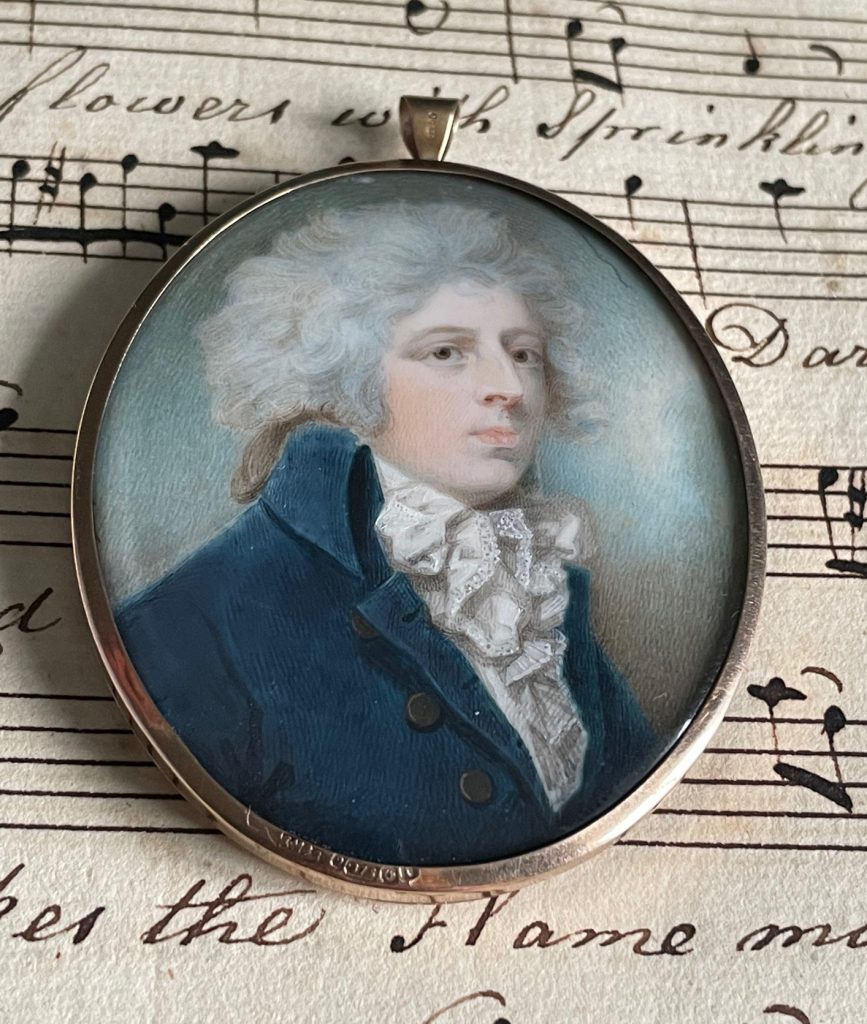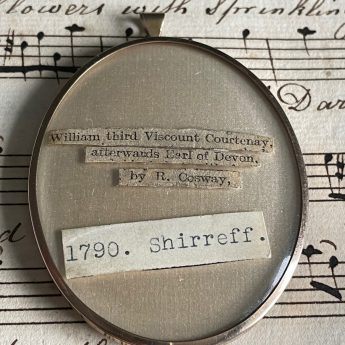
Infamous ‘Kitty’ Courtenay
Portrait miniatures, silhouettes, portraits & an omnium-gatherum of historical interest & character.
Enquiries and orders
Infamous ‘Kitty’ Courtenay
Charles Shirreff (1749-1829)
Sold
The flamboyantly dressed sitter in this important portrait has traditionally been identified as William Courtenay (1768-1835), 9th Earl of Devon and 3rd Viscount Courtenay of Powderham Castle in Devon. Known for his good looks, Courtenay also sat to Romney (1780s) and to Richard Cosway (1791).
Affectionately known as ‘Kitty’, William Courtenay was the only boy amongst the fourteen children born to William Courtenay, 8th Earl of Devon, 2nd Viscount Courtenay and his wife Frances Clack. At the age of twenty, he inherited his father’s titles and estates and embarked upon a crazy spending spree including the addition of a music room to his family home. He had achieved notoriety a few years earlier for an alleged affair with William Beckford of Fonthill, a wealthy art collector eight years his senior. Having intercepted letters between the two, the affair was leaked to the press by Courtenay’s uncle. The story masked the young men’s names but the fall-out was nonetheless damaging for Beckford who hurriedly retreated with his wife to Europe for an extended tour.
As a result of his extravagant lifestyle, Courtenay was also obliged to move abroad in 1811 to escape his creditors. Initially he settled in America before purchasing a Parisian château where he died in May 1835. Unmarried, his English estates and titles went to a cousin but he bequeathed his Parisian home with its lavish contents to his coachman and his wife. Beloved by his tenants, his body was brought back to Powderham Castle for burial.
In excellent condition, the portrait resides in a later 9ct gold frame that is glazed on the reverse to show cream silk with an old auction catalogue entry erroneously attributing the portrait to Richard Cosway.
The youngest son of a wealthy Scottish wine merchant, Shirreff went deaf at the age of three but was subsequently taught sign language and how to speak. Accompanied by his father, he travelled to London in 1768 where he entered the Royal Academy Schools winning a silver medal for drawing. Shirreff went on to become a successful miniaturist and in 1778 obtained permission to travel to India. This ambition was not fulfilled though until 1797 by which time his father had died so he travelled alone. India suited him and his studio prospered but he decided to return to England in 1809 where he married and continued to paint and exhibit.
Item Ref. 7079
Size: framed, 66 x 56mm
Provenance: Doris Herschorn (d. 1975) and by descent to her son Hugh Sassoon
